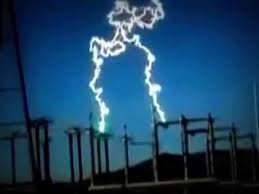- Joined
- Apr 30, 2015
- Messages
- 12,226
The PTC (positive temperature coefficient) device is the same little gizmo that they used to control the degaussing coils around your color tv picture tube. It tapers the current down as it heats up. John H. and I (and others) were thinking it would give a better demag effect than just a shot of AC because if your shot happened to stop right on the peak of the AC sinewave- well you get the idea. Of course if you have a variac in the circuit you could just flip the switch to demag and turn the voltage down. Same effect.
The MOV (metal oxide varistor) is a voltage clamp like a double zener diode. Protection for the bridge rectifier and toggle sw. from inductive kick from the chuck coil. Small 0.1uf cap also. Omit them if you dare LOL Someone else (Pete?) zapped a bridge already. But his setup was somewhat unusual.
Extra filtering caps- optional as far as I'm concerned. Another part to dry out and fail someday. If you can get good results without it...Large high voltage electrolytics are always the weak link- and expensive. Use the smallest uf value you can.
Mark
The MOV (metal oxide varistor) is a voltage clamp like a double zener diode. Protection for the bridge rectifier and toggle sw. from inductive kick from the chuck coil. Small 0.1uf cap also. Omit them if you dare LOL Someone else (Pete?) zapped a bridge already. But his setup was somewhat unusual.
Extra filtering caps- optional as far as I'm concerned. Another part to dry out and fail someday. If you can get good results without it...Large high voltage electrolytics are always the weak link- and expensive. Use the smallest uf value you can.
Mark
Last edited:

